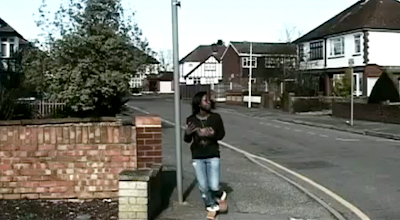180-degree rule
When we first filmed our preliminary task we had to film it three times, and two of these times were because we had broken the 180-degree rule. We kept switching from different sides to film; this obviously broke the 180-degree rule and confused the audience. When we finally got it right, we took this experience and put it into play when filming the final production. We never had had to re-film because of the 180-degree rule so I feel that we had learnt how to use and apply this very important rule.
Shot/ Reverse Shot
With regards to the use of shot/reverse shot, looking back at the preliminary and how we applied the shot/reverse shot I feel that we gave too much head room and did not focus enough on the characters expressions, so this is what we had to work on:



But after looking in much detail at this error, when filming the final production, we made sure that the characters expression was fully in frame and did not allow too much head room which would show the audience ‘wasted space’ of the surroundings, this gave the production a much more professional look and added to the overall quality of the film.



Match on action
We fully used the extent of match on action when filming the final product but not so much when we was filming the preliminary task. When filming the preliminary task, we kind of rushed the footage, where looking back i think we should have filmed a little bit of quality footage and then came back to do it the next day. Learning from this, when filming the full product we made sure we had quality footage and if we did not finish filming we would use match on action and pick up from where we left off the next time we filmed. This technique was very useful and contributed to the quality of the full product.
Day 1 shooting
This is showing a shot that we took on day 1

Final shooting date
This is showing a shot taken on the final day of filming
Eye-line match
When we was filming the preliminary task we did not have any experience with regards to editing techniques such as an eye-line match, therefore we did not use this in the preliminary. But as we learnt more and more about editing techniques we found out how to use an eye-line match within our full product. We did this by shooting one shot of our character looking at something and then the camera switches to see what the character was looking at without panning. We used this to great effect in our full product and therefore i believe that this shows a great improvement in our skills with both the camera and using the editing software final cut pro from shooting our preliminary to shooting our full product.
Character looking at something:
Showing the audience what the character was looking at:
Extreme close-ups
When first shooting our preliminary we were not aware of how to use an extreme close up to mass effect, we would only use medium close ups:
Which did not show the intensity of the characters expressions, but through the research of different shots we realized how and when to use an extreme close-up. Within our final product we used an extreme close-up of our protagonist when she was waiting for Melinda:
Colouring/Lighting
In our preliminary task we did not take much notice of the lighting we used because we did not see how big of an impact it could have on a product. When we was editing our full product we noticed that the lighting definitely needed to be darkened to give it that thriller essence that was needed. We learnt how to apply this and gave it a thriller feel which was perfect for both the conventions of a thriller and the look we wanted to connote to the audience. Therefore I can see how far we have come from the preliminary regarding the editing special effects, we learnt how to apply a thriller essence and the special effects that can be used when editing.

Overall, i can see a major improvement from shooting the preliminary task to shooting the full product, we have learnt via research, different uses of shots and editing techniques which gives a product a professional edge. The quality of the full product is much higher in comparison to the preliminary task and our experience of working with both cameras and editing software has vastly improved.

























